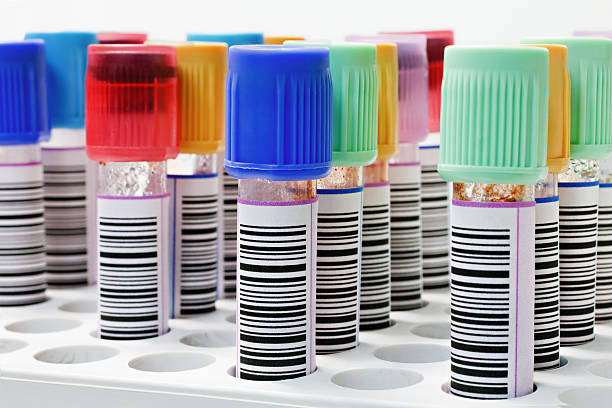Introduction
In the world of analytical chemistry, precision and accuracy are paramount. The reliability of scientific analysis hinges on the quality and integrity of every component involved, including the often-overlooked sample vial.
These small containers play a critical role in preserving the integrity of samples and ensuring the accuracy of test results. In this article, we will explore the importance of sample vials, their various types, and how they contribute to the success of analytical experiments. For more information, you can visit this link:
https://www.shopshimadzu.com/product/categories/vials-and-accessories
The Significance of Sample Vials
Sample vials are essential tools in analytical laboratories for several key reasons:
Sample Preservation: Sample vials serve as protective enclosures for samples, shielding them from external contaminants, moisture, and air. This preservation is crucial for maintaining the stability of samples over time.
Minimized Contamination: High-quality sample vials are designed to minimize the risk of contamination. They are made from materials that do not react with or leach into the sample, ensuring that the results are accurate and untainted.
Sample Identification: Sample vials are typically labeled or barcoded for easy identification and tracking, preventing mix-ups and ensuring traceability in laboratory processes.
Versatility: Sample vials come in various sizes, shapes, and materials to accommodate a wide range of sample types, from liquids and solids to gasses and volatile compounds.
Types of Sample Vials
Laboratories rely on different types of sample vials based on the nature of the sample and the analysis to be conducted. Some common types include:
Glass Sample Vials: Glass vials are widely used for their chemical inertness and transparency. Borosilicate glass, in particular, is resistant to thermal shock and is an excellent choice for samples that may undergo temperature changes during analysis.
Plastic Sample Vials: Plastic vials, typically made of polypropylene or polyethylene, are lightweight and less prone to breakage. They are suitable for many applications, including storing aqueous samples and biological specimens.
Headspace Vials: Headspace vials are designed for the analysis of volatile compounds in gaseous or liquid samples. They feature a special septum cap that allows for the extraction and analysis of the gas phase above the sample.
Septum Vials: These vials have a specialized septum cap, which is essential for maintaining an airtight seal during sample analysis. Septum vials are commonly used in gas chromatography (GC) and mass spectrometry (MS) applications.
Screw Cap Vials: Screw cap vials have threaded caps that provide a secure seal, minimizing the risk of leakage or contamination. They are commonly used in HPLC (High-Performance Liquid Chromatography) and GC applications.
Crimp Cap Vials: Crimp cap vials require a manual crimping tool to seal the cap onto the vial. They are known for their excellent sealing properties and are often used in pharmaceutical and environmental analyses.
Importance of Sample Vial Selection
Choosing the right sample vial is crucial for accurate and reliable results in analytical chemistry. The selection process should consider several factors:
Sample Compatibility: Ensure that the vial material is compatible with the sample type. For example, acidic or alkaline samples may require specific vial materials to prevent chemical reactions.
Analysis Method: Different analysis methods, such as GC, HPLC, or MS, may require specific vial types and closures to maintain sample integrity and ensure the method’s success.
Sample Volume: Select a vial size that accommodates the sample volume while minimizing headspace, which can lead to sample evaporation or contamination.
Sealing Mechanism: Consider the sealing mechanism (screw cap, crimp cap, septum) that best suits the analysis method and ensures an airtight seal.
Labeling and Identification: Opt for vials with clear labeling options or barcoding to prevent mix-ups and ensure traceability.
Sample Preservation: If samples need to be stored for an extended period, select vials that offer excellent sealing properties and protection against light, moisture, and temperature fluctuations.
Cost Considerations: While quality is paramount, consider the cost-effectiveness of the chosen vials, especially for routine or high-throughput analyses.
The Impact on Analytical Accuracy
The choice of sample vial may seem inconsequential, but it can have a profound impact on the accuracy and reliability of analytical results. Here are some ways in which sample vials contribute to analytical accuracy:
Reduced Contamination: High-quality vials minimize the risk of sample contamination from external sources, ensuring that the analyte being measured is the only variable affecting the results.
Preserved Sample Integrity: Properly selected vials preserve the integrity of samples by preventing chemical reactions, degradation, or evaporation, which could alter the composition of the sample.
Consistent Results: Reliable vials ensure consistent and reproducible results, allowing for meaningful comparisons between different samples and experiments.
Traceability: Well-labeled vials with clear identification methods facilitate accurate sample tracking and data interpretation, minimizing errors in the analytical process.
Conclusion
Sample vials may be the unsung heroes of analytical chemistry, but their role in preserving sample integrity, minimizing contamination, and ensuring analytical accuracy cannot be overstated. Laboratories must consider the nature of their samples, the analysis methods employed, and the specific requirements of each analysis when selecting sample vials. With the right vials, analytical chemists can confidently conduct experiments, secure in the knowledge that the integrity of their samples is preserved, and their results are accurate and reliable.
